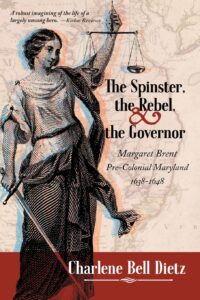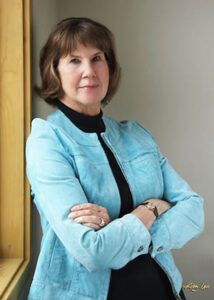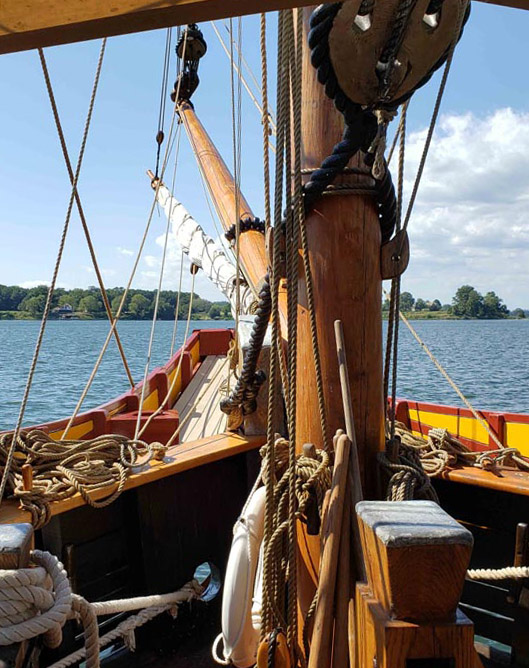My plunge down the twisted passages of research started with a simple genealogical discovery. “Giles Brent, a thirty-some-year-old man, married a nine-year-old Indian Princess.” My writer brain wondered if there was a story here. Everyone from genealogists to historical writers branded Giles Brent as an opportunist set on acquiring land through his marriage. In 1643, he indeed married a young Indian princess, the ward of the governor of pre-colonial Maryland, Leonard Calvert, and his good friend, Lady Margaret Brent, Giles’s sister and a spinster.
Red flag waving here! Why would a powerful man of the 1600s, such as the governor, have a spinster for a good friend, and why would the two of them allow this inappropriate marriage to one of the guardians’ brother?
Into the Black Hole
Scouring genealogy sites and Wikipedia compelled me to click on other Internet sites. This provided hours of jaw-dropping entertainment, but no new relevant knowledge. After wasting time learning unnecessary material, I found no scholarly evidence to support the claims concerning Giles Brent. I relegated these sources to my superficial “timewaster” file. However, I found quite a different story waiting to be told.
Here’s What I Learned Digging Deep in This Rabbit Hole
- Researchers copy each other.
- The further back in time, the more convoluted the tale.
- Libraries and Internet searches provide different experiences.
- Nothing compares to being in the actual setting.
- An open mind can bring surprises.
The Shadows of Truth
Question the research when little information accompanies the facts, especially if the historians record it with near identical language. It may be true, or they might be copying each other. A while ago, I needed to verify a birthday. Several genealogy sites reported identical dates, but their dates didn’t fit the logic of birth order. Be suspicious of information providing no compelling evidence or references.
In researching, the further we go back in time, the more elaborate the accounting. Think of your last family get-together when someone told about a family-known incident, and others jumped to insert corrections or different versions. Since historical novels must be set at least 50 years ago, expect the truth to hide somewhere in the research but get distorted in the retelling.
A successful historical novel’s core must strike a balance between historical facts and entertainment. The entertainment comes from imagination or that timewaster file.
Climbing Out of Darkness
In the search for more scholarly knowledge, the public library offers a different, although not necessarily better, approach than the Internet. Every published library book, even if lacking in truthfulness, has been through a vetting process, unlike on the Internet. Another plus: when I select a book from a shelf, something magical happens. I automatically search neighboring books to see it they have relevant information—a different experience than clicking on Google lists. To understand the ambiance of time and place, I skim period novels, and I know librarian’s DNA compels them to conjure up invaluable resources: perhaps maps, paintings, illustrations, and possible primary source materials.
The Internet lists free, scanned books in PDF format, as do historical archives and libraries. However, conducting thorough research must include listening and talking to other experts and historians. The British Museum has audios of language and speech patterns from decades past. I search documentaries and listen to podcasts and lectures. University graduate theses, found online, often offer unique perspectives. Any relevant footnote may contain gems, and historical archives’ special collections contain rare documents.
Into the Sunlight
IntheMaryland State Archives’ Special Collections, Dr. Lois Green Carr documented 134 cases that Giles Brent’s sister Margaret presented in provincial court. According to these cases, it appears Margaret first spoke for her own rights, then became the voice for others. Finally, she became known as attorney when she started speaking for the rights of men and the gentlemen of the courts.
In 1648, Margaret feared if she didn’t have a strong voice, the new governor would allow the Virginia militia to destroy Maryland. As a large landholder and the Maryland’s governor’s executrix, she asked for two votes, one because she owned more land than anyone else in Maryland, and another because Leonard Calvert appointed her as his executrix. This happened 224 years before Susan B. Anthony. Now, the America Bar Association bestows their Margaret Brent award annually on five deserving women attorneys. I was intrigued by this woman, who against all social mores was fighting legal battles for the good of her society. I knew I had found the story I wanted to tell.
I yearned go to Maryland. Eventually, I was able to visit Historic St. Mary’s City. I also attend an archeological-research session and enjoyed discussing the world of Margaret Brent with their Heritage Scholar, Dr. Henry Miller. Many adventurers who settled in Maryland became sick and died, but I didn’t know what illness they had. Settlers referred to those who survived their first year as being seasoned. Dr. Miller said his evidence pointed to this illness being malaria. No researcher can discount the value of walking on the land, breathing the air, and talking with other professionals. I believe being there made my work feel more authentic.
This woman in a 1648 Maryland court speaking for others intrigued me more than Giles Brent’s scandal, leading me out of my rabbit hole to bring the story of Margaret Brent to light in The Spinster, the Rebel, and the Governor: Margaret Brent, Pre-Colonial Maryland 1638-1648. But without diving into that research rabbit hole in the first place, I never would have found my way to her story.
[Top photo: Aboard a replica of the Dove, which sailed from England to Maryland in 1932. Photo by Charlene Bell Dietz]
Charlene Bell Dietz writes in-depth researched science-suspense and historical-suspense award-winning mystery novels and short stories. Her current work, The Spinster, the Rebel, and the Governor; Margaret Brent: 1638-1648 was just released this September. Two of Charlene’s four novels have won Kirkus Reviews’ Starred Reviews and were named to Kirkus Reviews’ best books of 2018: The Flapper, the Scientist, and the Saboteur combines family saga with corporate espionage, and The Flapper, the Impostor, and the Stalker propels readers back into 1923 frenetic Chicago. Her award-winning short stories have been published in the Rocky Mountain Fiction Writers 2016 Anthology and SouthWest Writers 2019 Anthology. Charlene, a retired educator, traveled the United States as a consultant for Houghton Mifflin Publishers after a career teaching little ones, older ones, and college graduates. She lives in New Mexico. Connect: www.facebook.com/charlene.dietz.9/, https://inkydancestudios.com/



What a terrific beautifully written article. Book sounds so interesting.
I agree with your research abyss, especially for historical fiction.
Congrats on your new book!
I loved reading about your research journey. It’s easy to get lost in research rabbit holes, but so rewarding to mine them for a solid story. Nice!